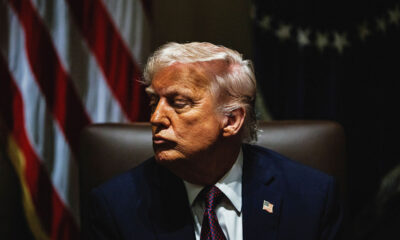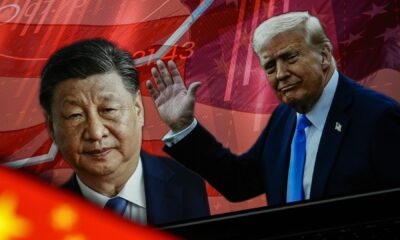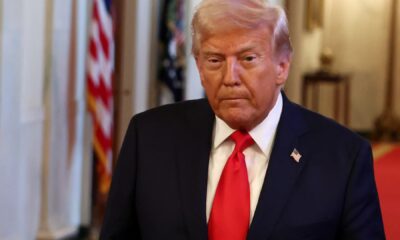‘Talk Money to Me’ author Jason Tartick joins ‘The Big Money Show’ to discuss his new book, shedding light on the importance of discussing your finances with your partner.
Americans have historically been averse to discussing financial matters among family members, but a recent study by Fidelity Investments found that attitudes toward taboo wealth topics are shifting.
Fidelity’s State of Wealth Mobility study found that 56% of Americans didn’t discuss family finances with their parents when they were children. Of that group, 82% wish that they had, because they think it would’ve been beneficial to have received a financial education at an earlier age.
It also found that Americans’ attitudes to those talks are changing, with 83% of respondents saying that it’s important to talk about money management with children, and 67% of parents already talking to their children about family finances.
“Money and wealth is one of the topics that, notoriously, we just don’t like to talk about historically,” David Peterson, head of advanced wealth solutions at Fidelity Investments, told FOX Business. “Wealth is like a deeply personal experience, so in some respects, it’s not surprising that people have historically been uncomfortable talking about it.”
WHAT NET WORTH DOES ONE NEED TO BE RICH IN 2024? HERE’S WHAT AMERICANS THINK
Americans’ attitudes toward once-taboo financial conversations are easing, Fidelity’s study found. (iStock / iStock)
“The study indicated that people are starting to sort of break that cycle of avoiding the family discussions. And so clearly, if we relate that then to the intergenerational wealth transfer, that is sort of a generational difference, and what we found is that older people generally – they’re just not as comfortable talking about it,” Peterson said.
Peterson said that many Americans have experienced the complications that can arise when a parent who hasn’t been as open about their finances begins to decline, and family members have to step in to help take care of their finances.
“When people start reaching end of life, and they suddenly can’t manage their own finances or they no longer have the capacity to make decisions around it, this is where you start to see things kind of go sideways a little bit, because they haven’t shared with their families what their wealth is, where the wealth is, what it’s made of,” he said. “And you can find yourself very quickly in a situation where, during a really emotional time of life, people are now worried about, well, how do we actually manage mom and dad’s finances when they can no longer do it themselves?”
MYSTERIOUS $7B ESTATE TAX PAYMENT SPURS QUESTIONS ABOUT SOURCE OF FUNDS
Peterson suggested that families approach financial conversations as a process, rather than trying to take care of it all at once. (iStock)
He said that it’s important for families to have documents including a health care proxy or health care power of attorney to help navigate the health care system, as well as a living will with instructions about the individual’s hopes around that. A financial power of attorney that entrusts someone to act on their behalf on financial matters is another key document.
Families should also consider other documents and designations needed for end-of-life, Peterson said. Brokerage accounts that can be jointly titled with rights of survivorship can be transferred very easily to the surviving owner, while beneficiary designations can also be included to transfer accounts on death to the beneficiary.
“You need a will, which is going to account for all the things that don’t really have a title to it or a beneficiary designation on it,” he added. “And then, in some cases, it might be beneficial to have a trust and put assets in that trust so that they can pass, similarly to an account with a beneficiary designation. The trust will then define who gets all those assets that are in the trust.”
BUFFETT TALKS MORTALITY AND PHILANTHROPY IN SURPRISE SHAREHOLDER LETTER
Fidelity’s study found that people with financial plans have more confidence about building and protecting their wealth. (iStock / iStock)
Peterson suggested that to get the ball rolling it can be helpful to do so with the understanding that it’s not likely to be a one-off conversation and more of a process to ease some of the pressure and emotions surrounding those talks.
“I think for some people, having a very strict itinerary of what you’re going to talk about works very well; in other cases it doesn’t, and my recommendation is not going into the conversation thinking that it’s going to be a one-and-done kind of conversation. These are hard conversations to have,” Peterson said. “Look, I’m in the business, and I remember having the conversation with my dad, who’s now passed, and you would think it’d be easy for me, but it’s not, because these things are wrapped up in all sorts of emotions.”
Sharing some details about financial accounts and points of contact can also be a good first step, even if it doesn’t necessarily lead to full disclosures about the specifics of an older person’s wealth, he explained.
GET FOX BUSINESS ON THE GO BY CLICKING HERE
“Given particularly older generations aren’t as willing to reveal necessarily all the specifics of their wealth, what I often recommend is that you at least share what it is, not necessarily the amount, but where it is; who are the key people to contact in the event that a family member has to know more about it. And keep all these things in a place that’s easy for people to find,” Peterson said.
“Probably the first step is just doing a really robust inventory of what’s there, a balance sheet, a wealth statement, a net worth statement, whatever you want to call it – but just this list of things so that when someone has to act on it, they at least know where to go,” he explained. “And that way, you sort of protect this sensitivity around how much is in all of these different accounts or banks or financial institutions.”
Regardless of the process individual families use to build their financial plans, Fidelity’s study found that having a plan is a confidence booster. While about four in 10 Americans are worried about losing their wealth, 78% with a financial plan said they’re confident they’ve taken the right steps to build and protect their wealth, compared to 26% and 27%, respectively, of those without plans.

 Economics1 week ago
Economics1 week ago
 Personal Finance1 week ago
Personal Finance1 week ago
 Economics1 week ago
Economics1 week ago
 Blog Post6 days ago
Blog Post6 days ago
 Economics1 week ago
Economics1 week ago
 Personal Finance1 week ago
Personal Finance1 week ago
 Economics6 days ago
Economics6 days ago
 Economics7 days ago
Economics7 days ago














